Popular Conditions & Diets
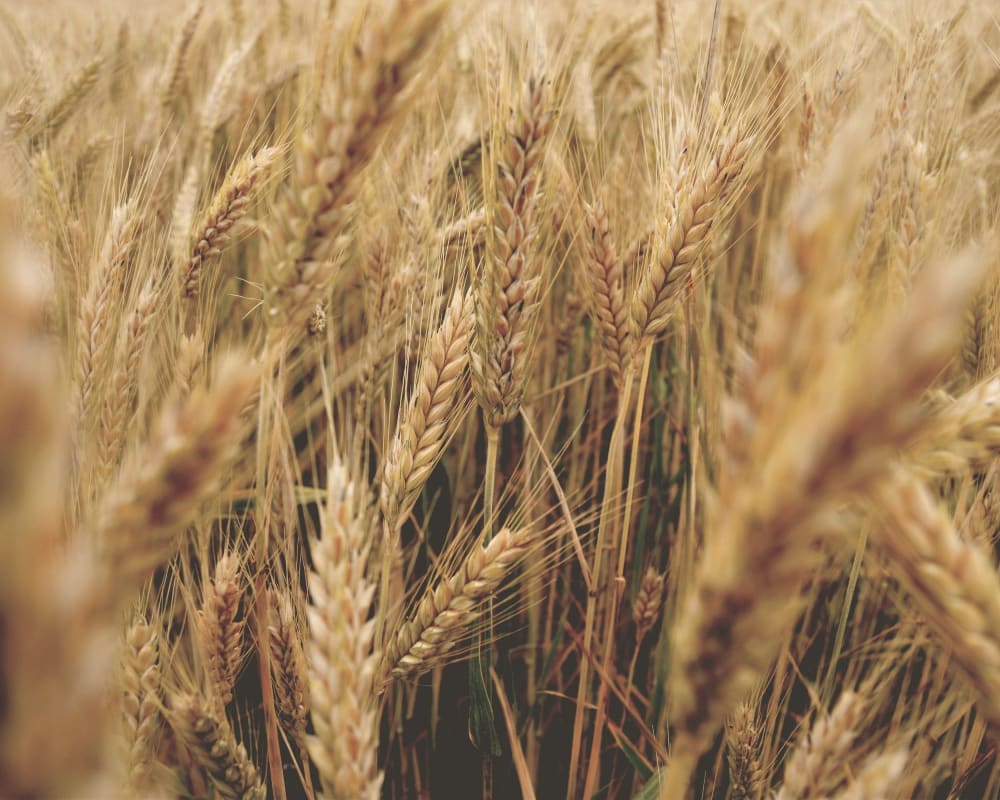
While testing for allergies and hidden food reactions is expensive, cutting wheat out of your diet is free to see if you feel any better. People are sometimes shocked at how much of a difference going gluten-free can make. In others, the experiment might prove that going gluten-free might not be necessary as it doesn’t lead to positive changes that make abstinence worth it. Either way, embracing alternative grains might make your gluten-free experiment or lifestyle much more manageable, enjoyable, and healthier!
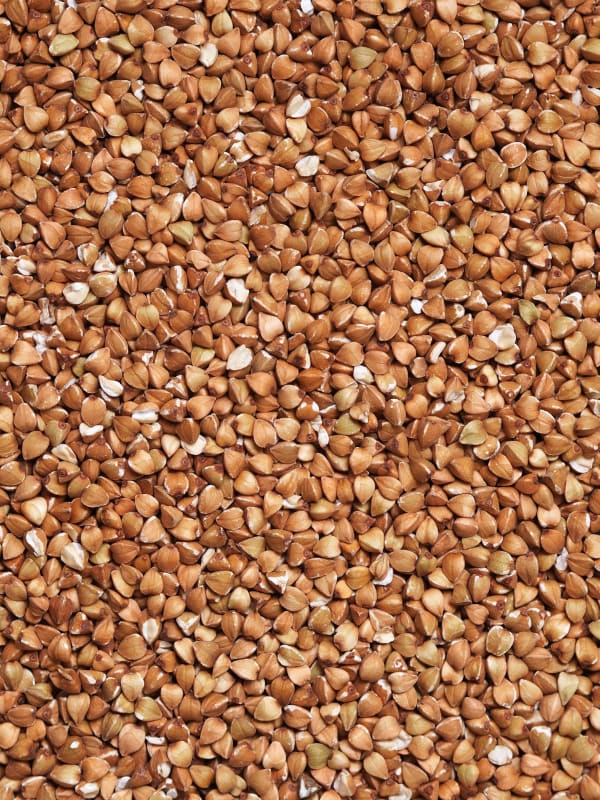

Buckwheat appears in various traditional Dutch dishes, and its common name comes from the Dutch word bockweit. We also find it in several traditional Korean dishes and Japan’s iconic soba noodles. Buckwheat originated in Central Asia and became prominent in traditional Eastern European recipes before being brought to Europe or North America. Technically, it’s not a grain but the seed of an herb related to Rhubarb. The flowers of buckwheat plants produce triangular seeds called groats which are then ground into flour.
Buckwheat is a terrific source of fibre, and several studies have linked buckwheat consumption to balanced cholesterol and blood pressure profiles. It is also high in the flavonoids quercetin and rutin, which work with vitamin C to maintain blood flow and healthy clotting and prevent cholesterol from oxidizing. The magnesium and trace minerals in buckwheat are extremely well-absorbed, and it boasts all eight essential amino acids. On top of all the fibre, minerals, and protein, buckwheat even contains the legendary blood sugar regulator chiro-inositol.

Oats originated in Asia and only reached Europe in the Bronze Age, primarily as animal feed. In light of this history, they are probably the newest of all major cereal grains on supermarket shelves today. Since they retain their bran and germ after being hulled, oats are likely the most nutrient dense of the whole grain family. Many of us rely on the fibre in oats, which as the breakfast staple oatmeal, delivers a stable fuel supply and supports regular bowel function. More specifically, oats feature a type of fibre called beta-glucan. This fibre has a particularly beneficial effect on cholesterol balance.
Oats also contain unique compounds called avenanthramides which add to the artery-protecting function of beta-glucans by preventing oxidative damage to cholesterol. They also provide a great serving of the heart mineral magnesium, creating a triad of cardio-protective effects. In clinical studies, oat-based foods have also demonstrated significant benefits in balancing blood sugar and insulin resistance, earning them a place in a healthy diet for type 2 diabetes. Make sure to look for gluten-free oats as they are often prepared in facilities that contain wheat and are subject to contamination.
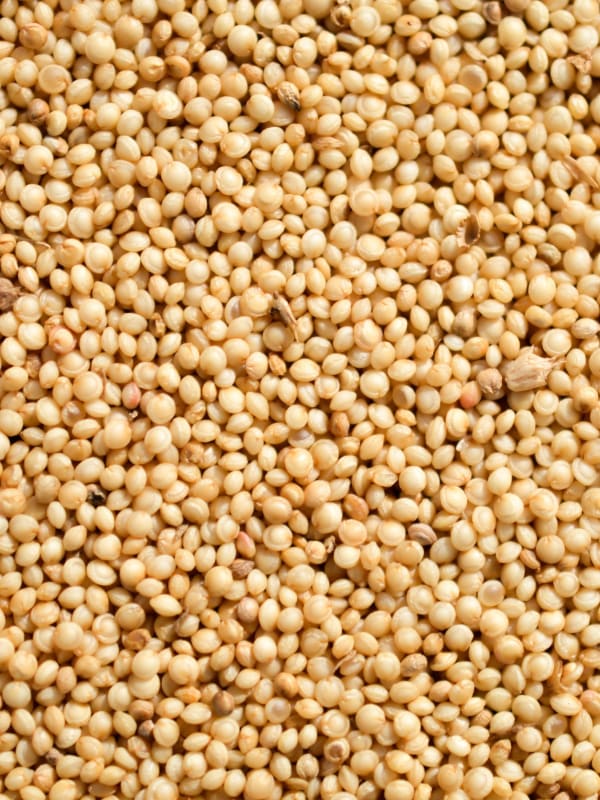
The word amaranth comes from the Greek for “never-fading flower,” owing to the beautiful plant that produces this fascinating tiny pseudo-grain. It was a famous mainstay of Aztec civilization and rightly considered a superfood until Spanish conquistadors destroyed fields and banned its use or possession for hundreds of years. This prohibition caused amaranth to virtually disappear, but fortunately, its cultivation survived in parts of present-day Mexico and the Andes mountains.
Amaranth kernels are adorably minuscule, so small that a handful might contain 5 thousand seeds. These small miracles are very high in protein- almost ⅕ of their weight, and unlike other grains, they are very high in the amino acids lysine and methionine. Amaranth offers twice as much calcium as milk and is also quite rich in iron, magnesium, and zinc, not to mention B and E vitamins and loads of fiber. These nutrients all contribute to its pronounced cholesterol-lowering effects.
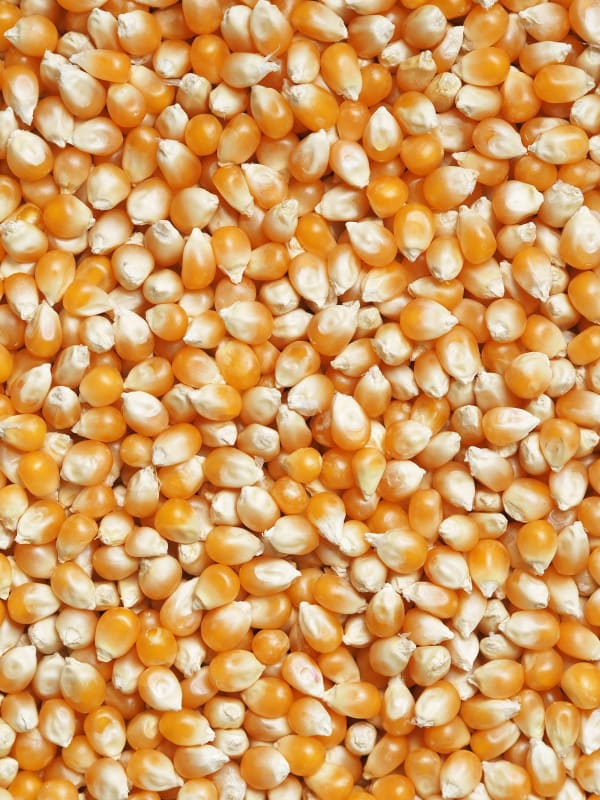
Corn has been eaten for 7000 years in polenta, grits, tortillas, and straight off the cob. It figured mainly in Ancient Mayan, Incan, and Aztec civilizations, where it most likely originated before also becoming hugely important in Native American cultures to the north. Heirloom strains would bear black, white, and red kernels, but even the modern yellow corn we all know and love has notable health benefits.
Yellow corn gets its colour from a health-promoting class of plant compounds called carotenoids. It provides at least three different carotenoids: firstly, beta-cryptoxanthin makes corn an excellent food for the lungs, and studies demonstrate that it inversely correlates with lung cancer. The more you eat, the lower your chances. Two more carotenoids called lutein and zeaxanthin make corn an excellent food for the eyes, as they help to prevent macular degeneration.
It turns out that corn can also be fantastic for the gut, as its handsome servings of fibre and antioxidant phenolic compounds work together to help protect the cells of the colon. The primary caveat of this cherished ancient grain is that nowadays, it is a highly genetically modified crop, so be sure to choose organic wherever possible.
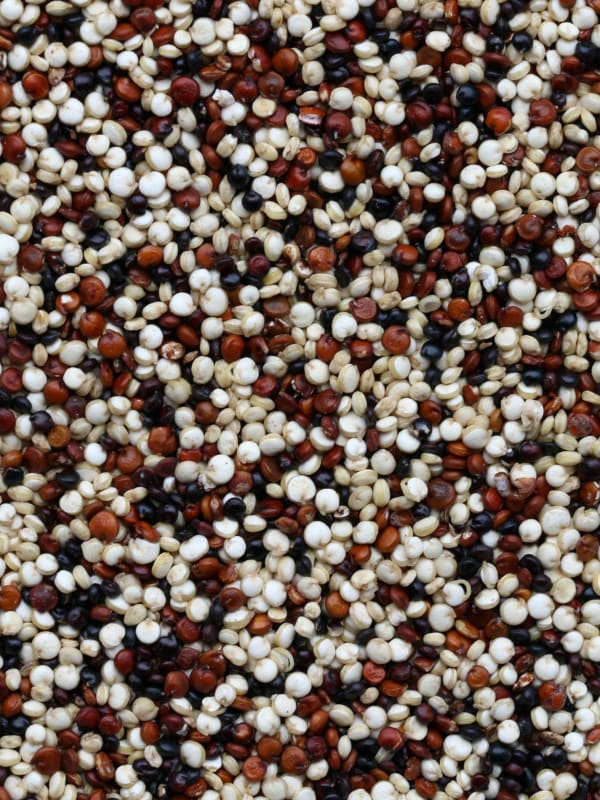
Quinoa was once considered a sacred food by the Aztecs and Incas, who properly recognized it for increasing vitality and stamina in warriors. As with amaranth, Spanish conquerors burned quinoa crops and made it illegal, forcing it underground. Centuries later, in the 1980s, the health potential of this superfood was discovered by two Americans who imported it and cultivated it in Colorado. Since then, the nutrition benefits have made its popularity explode, mainly as an alternative to rice. Quinoa also belongs to the pseudo-grain class as it is the seed of a leafy plant related to chard and spinach.
All 8 essential amino acids are abundant in quinoa, making it a legit source of plant-based protein. In particular, it has high levels of lysine, which is excellent for tissue repair and is well known clinically to ward off cold sores. It is also high in tryptophan, the primary amino acid we need to make serotonin and melatonin.
Quinoa is a fantastic source of fibre and a good source of iron, magnesium, calcium, phosphorus, manganese, copper, and zinc. This bouquet of vital minerals works synergistically to enhance bone density and produce cellular energy.
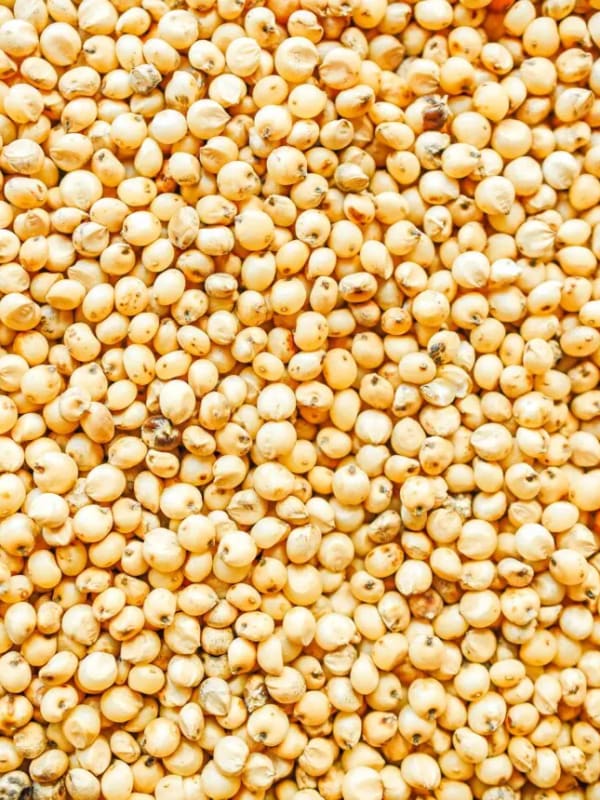
Sorghum is a drought-resistant grain that thrives in dry places lacking rainfall. Unsurprisingly it is a staple crop across Africa and India and has long been used to make a variety of breads and porridges. This sturdy crop has many similarities to corn but doesn’t grow nearly as tall and uses much less water to grow.
All sorghum varieties are high in iron and, therefore, a great addition to vegan or vegetarian diets. It also provides a good source of calcium, magnesium, potassium, phosphorus, and zinc. Some of the newer varieties of colourful sorghums display incredible health benefits distinct from all other grains. In some cases, they are even higher than blueberries in potent antioxidants called anthocyanins. These aggressive free radical scavengers can prevent cancer from developing and help ward off arterial damage and heart disease. Additionally, a formidable entourage of complex phytochemical groups found in sorghum distinguishes it as a highly micronutrient-rich grain that deserves a lot more attention than it gets.
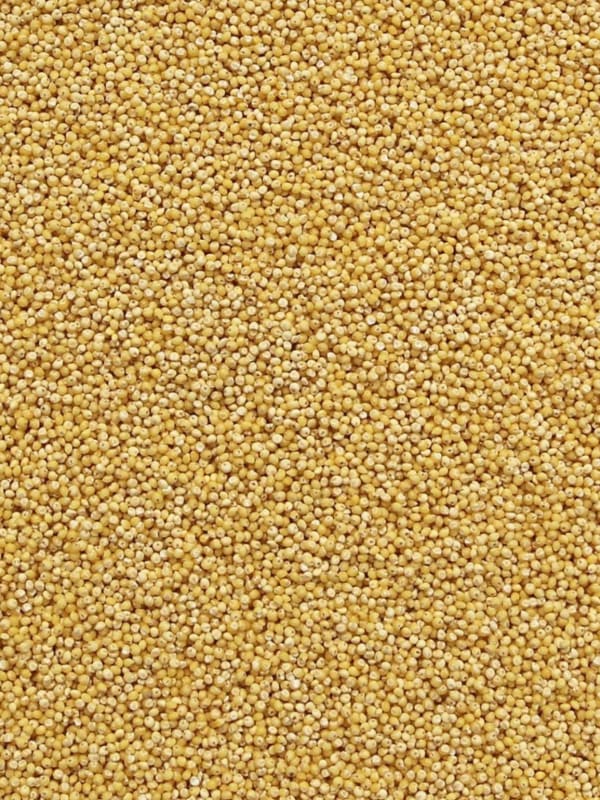
Millet is not one grain but an umbrella term for multiple species across different genetic families. Nevertheless, many similarities remain. All millet types are characterized by small tough kernels from remarkably rugged and hearty crops that can survive adverse climates and insect populations. Impressively adaptive, millets grow on relatively infertile soil that would never sustain wheat or barley. So considering their willpower to exist, it isn’t any wonder that these unique plants have fed humans for over 7000 years and probably much longer. Today most millet is produced by China, India, and West Africa and has a culinary legacy almost anywhere arid plains are found. One type of sweet millet called Teff is well-known for the staple injera bread that is ubiquitous across Ethiopia, Eritrea, and parts of Sudan.
Millets are high in magnesium, phosphorus, manganese, and B vitamins and an abundance of fibre and non-digestible polysaccharides to nourish the microbiome. They also feature more protein than corn and wheat and contain strong antioxidant compounds called catechins, similar to those found in green tea. This whole family of ancient grains helps keep high blood sugar in check while benefiting cholesterol and triglyceride balance. Choose darker millets for higher antioxidant content.
In an era where keto, paleo, and other low-carb diets have become all the rage, grains seem to have fallen out of style. The mass-vilification of gluten has further added to the troubled reputation of this entire food group. By briefly reviewing seven gluten-free grains, we have seen that there are excellent reasons not to overlook them. Now that many of us are privy to supermarket offerings stretching far beyond rice and whole wheat, it might be a great time to revisit the world of grains. It is a vast world indeed, and one that deserves its place in a lifestyle of diverse, nutrient-dense, plant-based whole foods.
Ajmera, R. (2018, January 6). Health benefits of Amaranth: Nutrition, antioxidants and more. Healthline. Retrieved February 28, 2023, from https://www.healthline.com/nutrition/amaranth-health-benefits#TOC_TITLE_HDR_4
Lang, A. (2022, September 13). What is Millet? nutrition, benefits, and more. Healthline. Retrieved February 28, 2023, from https://www.healthline.com/nutrition/what-is-millet#_noHeaderPrefixedContent
Mateljan, G. (2007). The world's healthiest foods: Essential guide for the healthiest way of eating. George Mateljan Foundation.
Murray, M. T., Pizzorno, J. E., & Pizzorno, L. (2006). The Encyclopedia of Healing Foods. Time Warner International.
Streit, L. (2018, November 30). Is corn good for you? nutrition facts and more. Healthline. Retrieved February 28, 2023, from https://www.healthline.com/nutrition/is-corn-good-for-you#what-it-is
Wikimedia Foundation. (2023, February 9). Millet. Wikipedia. Retrieved February 28, 2023, from https://en.wikipedia.org/wiki/Millet